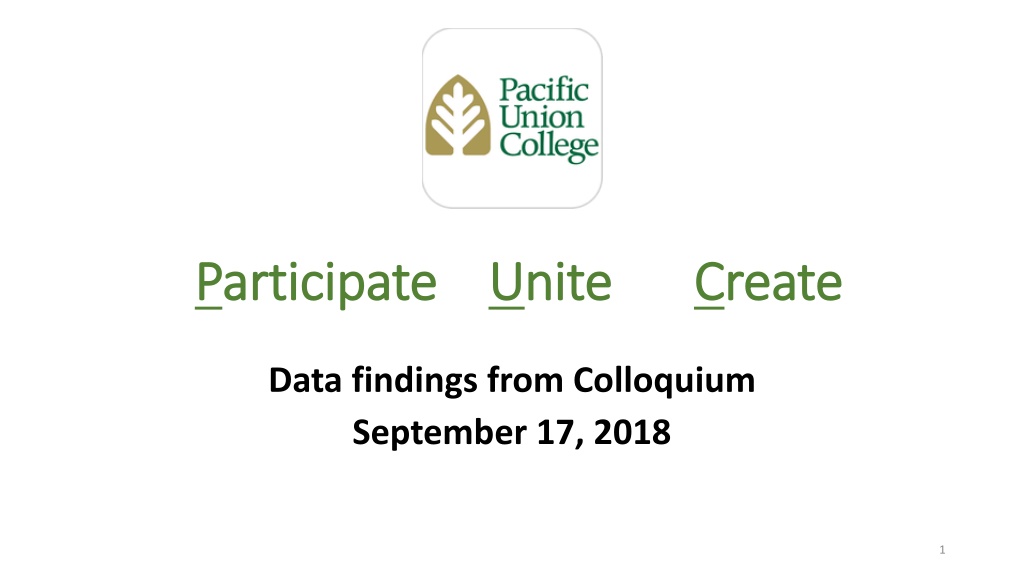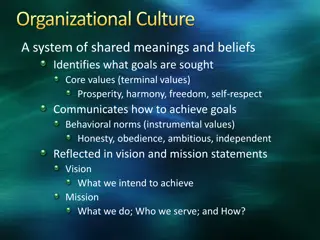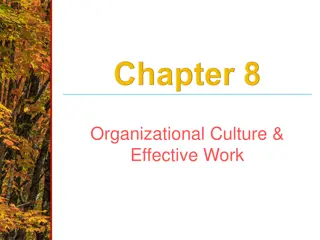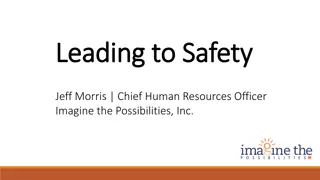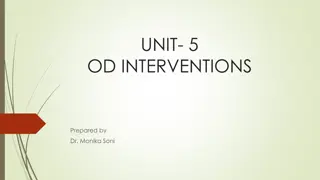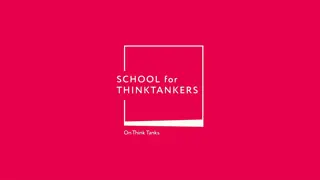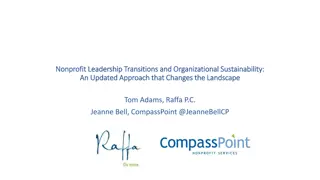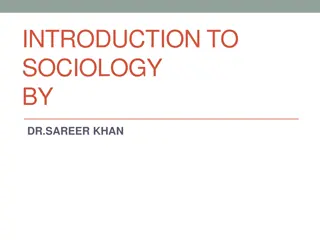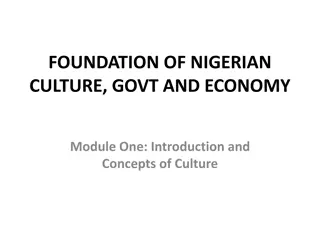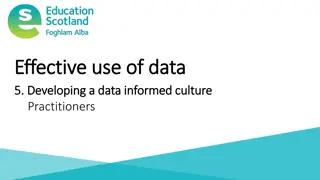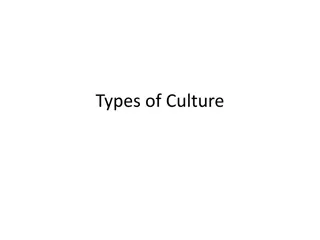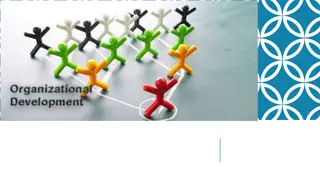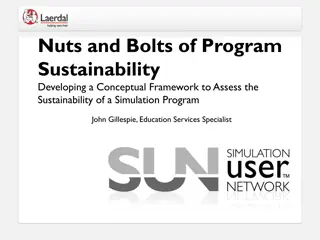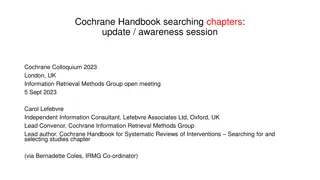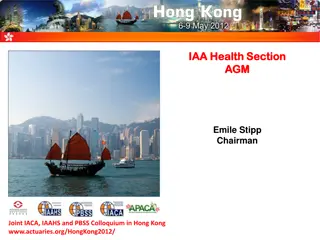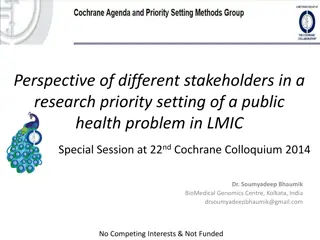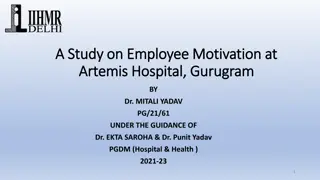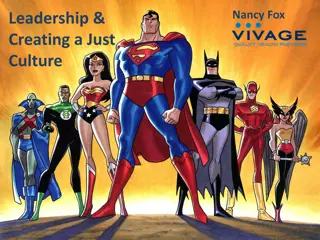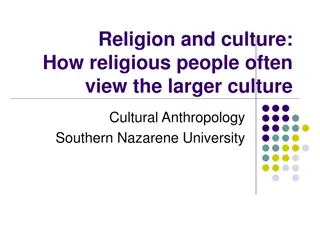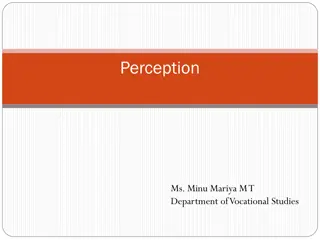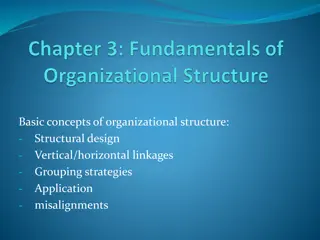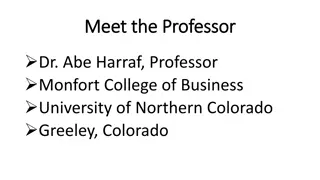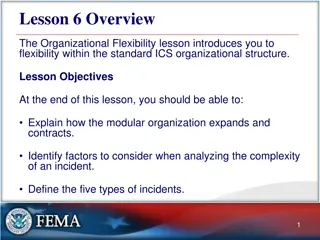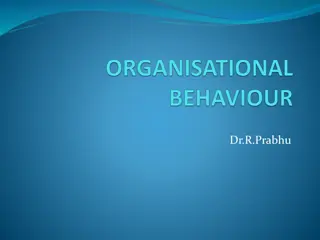Understanding Organizational Culture: Data Findings and Insights from Colloquium
Explore the data findings from a Colloquium held on September 17, 2018, examining the characteristics and symptoms of organizational culture. Dive into root causes, such as operating in silos, challenges without solutions, lack of ownership, and more. Discover ideas for fostering collaboration and a solution-oriented mindset within the organization.
Uploaded on Sep 23, 2024 | 0 Views
Download Presentation

Please find below an Image/Link to download the presentation.
The content on the website is provided AS IS for your information and personal use only. It may not be sold, licensed, or shared on other websites without obtaining consent from the author. Download presentation by click this link. If you encounter any issues during the download, it is possible that the publisher has removed the file from their server.
E N D
Presentation Transcript
P Participate articipate U Unite nite C Create reate Data findings from Colloquium September 17, 2018 1
There are two ways to look at the data collected: Characteristics of Current Culture Symptoms of Culture These are the root causes of the symptoms and these we can in fact change. These are very important and perhaps out of our control. They are subjective and very personal. An example would be PUC Culture 2018 Characteristic: Lack of urgency to change Symptom: Resistance to change 2
Characteristics and Symptoms In order of observation frequency Characteristics / Root Causes Symptoms Operating in Silos Resistance to change Challenges, not bringing solutions Dwelling in the past Lack of ownership Low employee morale Culture of thinking small Employee disengagement Urgency to change Passive, aggressive behavior Organizational dysfunction Chain of command Lack of consistency 3
CET Ideas CET Ideas As you look at this data, think about what the CET can do or wants to do... What is the Destination Postcard? 4
Characteristic: Characteristic: Operating in Silos What is the data showing? An alarming majority of the participants indicated that they have observed to frequently observed operating in silos (over 90%). And, what is more alarming is that 40% said they frequently observe this. What does this mean? Operating in silos can cause separation and distrust. What can we do about it? Departments and units working together towards a common goal is a good thing. How can we work toward creating a culture where there is cross-disciplinary dialogues and collaborations? IDEAS: 5
Characteristic: Characteristic: Challenges, not bringing solutions What is the data showing? Approximately 87% of the participants said that they have observed people seeing the challenges and not bringing solutions. About 40% said they highly observed this. What does this mean? Sometimes seeing the challenges and problems is easier than trying to find solutions. What can we do about it? We are creative and resourceful individuals, what would it look like if we all shared a growth- solution-based mindset? IDEAS: 6
Characteristic: Characteristic: Lack of ownership and no accountability What is the data showing? Approximately 77% percent of the participants said they have observed a lack of ownership and no accountability. What does this mean? This observation is subjective What can we do about it? Creating and lifting up the PUC culture is a team effort and everyone needs to own it and be accountable for its success. What can you do to take ownership and hold yourself and others accountable? IDEAS: 7
Characteristic: Characteristic: Unable to think big, lacking readiness for success What is the data showing? Approximately 77% of the participants said they have observed an inability to think big and there is a lack of readiness for success. What does this mean? This observation is subjective and the inability to think big also translates to a lack of freedom to think creatively for PUC can succeed. What can we do about it? What we do to encourage people to think big, to know that thinking big can in fact lead to success? How can we help PUC people to be ready to think bigger? IDEAS: 8
Characteristic: Characteristic: Lack of urgency to change What is the data showing? Approximately 77% of the participants said they have observed an inability to think big and there is a lack of readiness for success. What does this mean? This observation is subjective and it can mean that perhaps people just don t see a need to change, they are complacent. What can we do about it? Change is necessary for growth, and for the Cultural Engagement Initiative to grow and have momentum, we need to show people this is urgent. How might we do this? IDEAS: 9
Characteristic: Characteristic: Organizational dysfunction and entrenchment What is the data showing? Over 70% of the participants said they have observed organizational dysfunction and entrenchment. What does this mean? Organizational dysfunction can show up in different ways for people. What can we do about it? PUC has been in existence for 136 years, what is working well and how can we build on that? IDEAS: 10
Characteristic: Characteristic: Chain of command not followed What is the data showing? Approximately 50% of the participants said that the chain of command is not followed, the other half said they have not observed this. What does this mean? This observation is subjective and everyone probably has a different opinion depending on their personal situation and place. What can we do about it? There is a sense that at PUC the chain of command and leadership ladder looks much like any institution. What can you do to learn more about what this looks likes Why is this important to people? IDEAS: 11
Characteristic: Characteristic: Lack of consistency What is the data showing? Approximately 50% of the participants said that the chain of command is not followed, the other half said they have not observed this. What does this mean? This observation is subjective and if people see a lack of consistency it translates to people not trusting. This could also be due part of the change in leadership and the inconsistency that has created. What can we do about it? In order for the Cultural Engagement Initiative to be successful it has to be a movement. What can you do to make sure this work is consistent and people have faith in it? IDEAS: 12
Symptom: Symptom: Resistance to change What is the data showing? An alarming majority of the participants indicated that they have observed a resistance to change at PUC (over 90%). What does this mean? Change is hard and we all change many times in our lifetimes; however, it is also scary, often unwanted, and always exhausting. (The Elephant emotions) What can we do about it? Knowing what is happening and having clarity can help dissolve resistance. What can you do to provide clarity to the process and dissolve resistance? IDEAS: 13
Symptom: Symptom: Dwelling in the past What is the data showing? A large majority of the participants, approximately 84%, said that they have observed dwelling in the past. What does this mean? This observation is subjective and the stories that people hold can be very strong. Many people continue to think about past leadership and past behaviors (decisions, actions) at PUC and this creates a culture of the past. What can we do about it? The Cultural Engagement Initiative is looking to the future. The CET is co-creating the destination postcard for what culture will look like in the future. Behavior is contagious so help spread the word and share with others. IDEAS: 14
Symptom: Symptom: Low morale What is the data showing? Approximately 84% of the participants said that they have observed low morale. What does this mean? This observation is subjective this can mean that people at PUC are not happy and do not feel loyalty. Low morale is also quite costly as it often leads to turnover. What can we do about it? Students can tell when their staff and faculty have low morale. What might we do to foster loyalty and to bring back and/or foster that feeling of being a family and belonging? IDEAS: 15
Symptom: Symptom: Employee disengagement What is the data showing? Approximately 80% of the participants said they have observed employee disengagement this is alarming. What does this mean? Employee disengagement is a strong indicator of lack of motivation, commitment, and it s quite unhealthy. What can we do about it? To address employee disengagement, it is urgent and critical if PUC wants to create a healthy culture and workplace. What might we do to make this happen? IDEAS: 16
Symptom: Symptom: Passive and/or aggressive behavior What is the data showing? Over 50% of the participants said that they have observed passive and/or aggressive behavior at PUC . What does this mean? This observation is subjective and very personal, too. However, this negative behavior leads to distrust, gossip, and in some cases, unnecessary confrontations. What can we do about it? What specific behaviors can be identified and/or modified to facilitate healthy discourse in the community? IDEAS: 17
